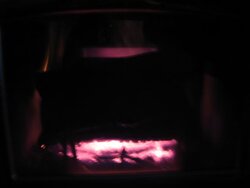Just to clarify, the owner's manual is linked to in the very first post in this thread. The manual has gone though several revisions since I bought mine 2 years ago. However when I used software to compare the differences, they were all very minor (for example they changed all references to CFM to "MHSC" and they updated the parts diagram to show the new refractory cover part #48).
Either way I don't know of any manufacturers in any industry that send new manuals out to existing customers when they are updated. However in this modern day, I would think that if a customer registers online, it would be a trivial matter for a company to send out additional information, updates, etc. to customers that want it. This would cost them very little and go a long way to build customer loyalty. I don't understand why so few companies "get it". But I digress.
Anyway, follow the link to the manual, and look at page 25 (which has the cleaning description) and page 26 which has a picture of it. But don't expect a lot, this is the description:
"Inspect for and remove ash build-up behind the combustion
package. This should be done in conjunction
with annual cleaning of the chimney connector since
this inspection is most conveniently done through the
flue collar opening. Inspect the passages to either
side of the combustion package (a mirror will be
helpful) and vacuum away ash using a flexible vacuum
hose inserted into each passage. Care should be
taken not to damage the white fibrous material in this
rear chamber. (Fig. 34)"
I can understand how even a professional sweep might not realize how delicate this stuff is. And I doubt they go read an owners manual before cleaning every new stove (although they should).
Either way I don't know of any manufacturers in any industry that send new manuals out to existing customers when they are updated. However in this modern day, I would think that if a customer registers online, it would be a trivial matter for a company to send out additional information, updates, etc. to customers that want it. This would cost them very little and go a long way to build customer loyalty. I don't understand why so few companies "get it". But I digress.
Anyway, follow the link to the manual, and look at page 25 (which has the cleaning description) and page 26 which has a picture of it. But don't expect a lot, this is the description:
"Inspect for and remove ash build-up behind the combustion
package. This should be done in conjunction
with annual cleaning of the chimney connector since
this inspection is most conveniently done through the
flue collar opening. Inspect the passages to either
side of the combustion package (a mirror will be
helpful) and vacuum away ash using a flexible vacuum
hose inserted into each passage. Care should be
taken not to damage the white fibrous material in this
rear chamber. (Fig. 34)"
I can understand how even a professional sweep might not realize how delicate this stuff is. And I doubt they go read an owners manual before cleaning every new stove (although they should).



